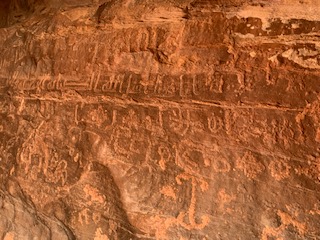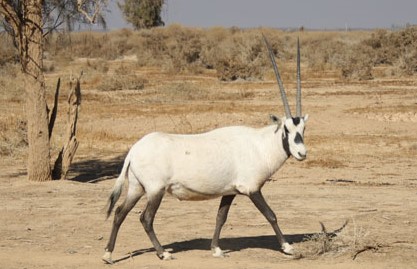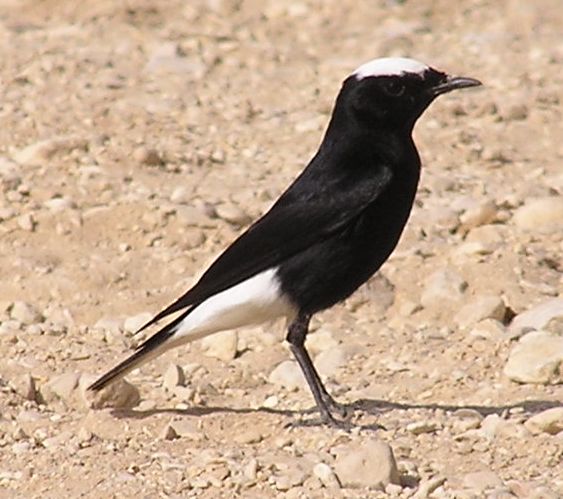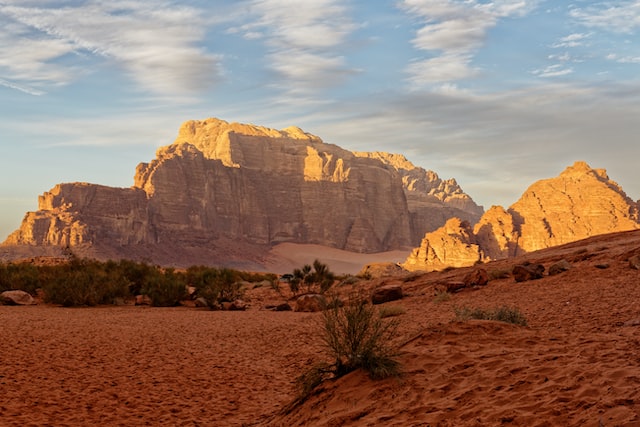Jordan’s Wadi Rum is located in the North Arab desert and is one of the region's most well-known tourist destinations.
The Wadi Rum area spans 720 km2 and offers one of the world’s most breathtaking desert landscapes with enormous red, yellow and black mountains and sand dunes. The countless canyons, rock bridges and fissures in the sandstone and granite mountains make for an interesting landscape.
The numerous petroglyphs, burial mounds and inscriptions are a main attraction and a matter of pride for the Bedouin tribes who still call the area home.

Their colourful goats-hair tents are a trademark of the region and something that you could enjoy when visiting.
You can also enjoy numerous tours which involve hiking, 4x4 tours, trekking, camel rides, and scrambling, to name but a few. You can stay in a Bedouin camp or sleep under the stars, the choice is yours.
In 1998 Wadi Rum and the surrounding area became protected and are currently under the control of the Aqaba Special Economic Zone Authority (ASEZA). ASEZA’s mission is to protect and promote the regions under its control.
History of the region
Wadi Rum is an arid, unforgiving landscape that humans have called home for thousands of years. A recent archaeological find indicates that people could have called this region home from as far back as 4500 BC.
Wildlife in Wadi Rum
Most of the wildlife that calls the desert home will only venture out at night. These nocturnal animals include hedgehogs, hares, wolves, gerbils, ibexes and hyraxes.
While the Wadi Rum area is famous for the Arabian oryx, you are unlikely to see the endangered animal.

You can spot an array of beautiful and striking birds, insects, and reptiles.
Birds native to Wadi Rum
The Desert Lark is one of the most common in Wadi Rum and is a species of bird that thrives in desert and semi-desert regions where it builds its nest among rocks and stones while feeding on insects and seeds.
Another striking bird you may be lucky enough to encounter is the black and white Mourning Wheatear and the White Crowned Black Wheatear. The former measures 13 centimetres and the latter 18 centimetres, these birds are striking against the orange hues of the desert. While both have a loud song, the White Crowned Black Wheatear is known for its mimicry and more varied song.

African Rock Martins are commonly spotted in the winter months and you may also spot Tristram Grackles with their distinctive colours. Various types of Buzzards and Steppe Eagles can be observed in their migration across Wadi Rum in the Spring and Autumn months.
Insects in Wadi Rum
You may be lucky enough to spot a blue agama which is a gorgeous lizard that grows just under 40 centimetres and has a distinctive blue tint on the upper body and head during mating season. Geckos are also common.
You may very well spot a Blaps beetle which has a unique way of walking across hot sand that looks like the insect is tiptoeing.
There are also ten types of snakes, two of which are poisonous vipers. Scorpions are much more prominent than snakes and it is the smaller white ones which deliver the most painful stings.
There are eight distinct types in the area but, just as with the serpents, they’re rarely encountered and even more rarely do they sting humans.
Vegetation in Wadi
While there aren’t man trees in Wadi Rum, you may very well come across a fig, Acacia with its flat-top, or Tamarisk. In terms of shrubs, you will come across Saxaul, Anabasis, and Hammada Salicornica.

Wadi Rum rules for visitors
Visitors are requested to abide by some basic rules and regulations, as described below, in an effort to assist in Wadi Rum’s conservation and in remaining respectful of the local culture.
- All cars should drive on the sand tracks.
- Do not hunt, injure, destroy or collect plants, animals, insects, rocks, stones or wood.
- Camping must be done in a registered camp.
- Gas should be used for cooking and charcoal for fire.
- Climbing must be done in official sites and usage of climbing chalk and gear should be kept to a minimum.
- Do not litter and always take your trash with you when leaving the area. It’s recommended that human waste be buried and toilet paper burned.
- Keep it quiet by refraining from playing music loudly and keeping all noise levels low.
- Always be respectful to the locals. Wearing appropriate clothing and requesting permission before taking photos is important.




